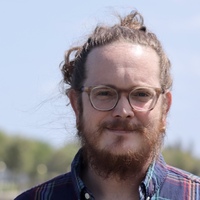Behind the science:
Depth Influences Symbiodiniaceae Associations Among Montastraea cav...
2020, June 23
Posted by Veronica Radice
Fields
Connectivity
Molecular ecology
Focusgroups
Scleractinia (Hard Corals)
Symbiodinium (zooxanthellae)
Locations
Belize
Platforms
SCUBA (open-circuit or unspecified)
“Patterns in Symbiodiniaceae communities related to host population structure across depth”
What was the most challenging aspect of your study (can be anything from field, lab to analysis)?
The most challenging aspect of this study was finding a reliable DNA extraction that yielded high-quality DNA for the Symbiodiniaceae ITS2 amplification. Our undergraduate co-author Ashley Reaume helped a lot with that for a summer internship at HBOI. We had a lot of trial-and-error for this part. We (mostly Ashley) suffered through a lot of failed PCRs before we arrived at a good method that allowed us to do both host microsatellite genotyping and symbiont ITS2 profile typing.
What was the most memorable moment in undertaking this study?
Just having the opportunity to do this research was amazing. It was really nice to do some “remote” work and get to stay on Carrie Bow Cay (CBC) every night rather than living on a small ship for the week, which is more what I’m used to doing. CBC is a tiny island ~15 km offshore on the Belize Barrier Reef. The Smithsonian Institution’s Caribbean Coral Reef Ecosystems Program has a small field station on CBC with accommodations for 6 scientists. The island is run on solar and generator power and uses rainwater collection system for fresh water (besides drinking water). CBC has really easy access to seagrass beds, mangroves, and barrier reef sites. It’s really well set up for SCUBA field work, with 3 small boats, SCUBA cylinders, and an air compressor. There’s a dry lab and a wet lab with a seawater flow-through system if you’re interested in running some manipulative ex situ experiments. There’s always a station manager on duty and best of all a full time cook that provides delicious meals 3 time per day. CBC is a blast to work out of and we have always had great experiences working there. I highly recommend it!
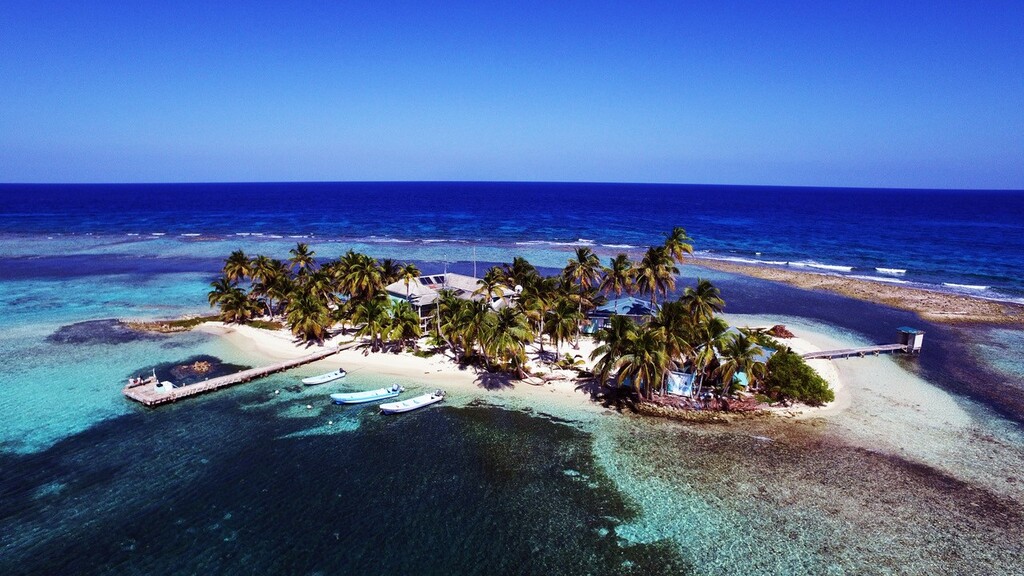 Aerial photograph of Smithsonian Institute’s Carrie Bow Cay Field Station.
(C) Voss Lab FAU-HBOI
[CC BY-NC 4.0]
Aerial photograph of Smithsonian Institute’s Carrie Bow Cay Field Station.
(C) Voss Lab FAU-HBOI
[CC BY-NC 4.0]
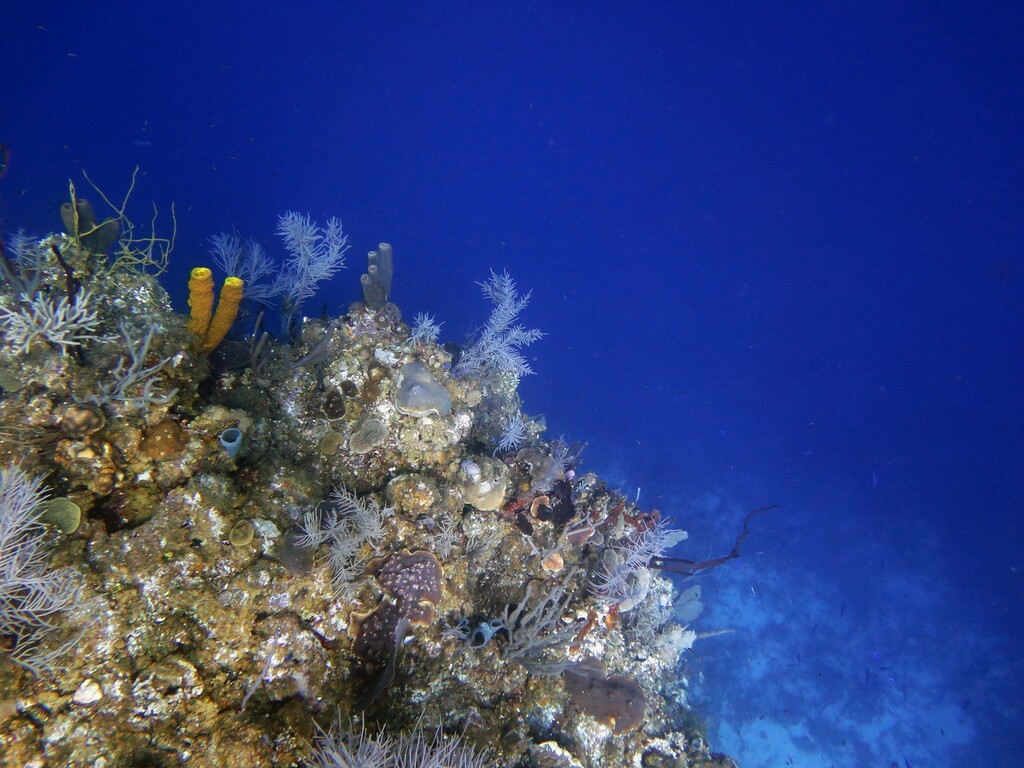 Looking off the barrier reef down the reef wall
(C) Voss Lab FAU-HBOI
[CC BY-NC 4.0]
Looking off the barrier reef down the reef wall
(C) Voss Lab FAU-HBOI
[CC BY-NC 4.0]
What was your favorite research site in this study and why?
We were really fortunate to have been highly productive in our first few sampling days and to have weather that allowed us to make it out to Glover’s Reef Atoll. This site was really nice, it’s a lot further offshore than the barrier reef sites and seems to be less impacted, so the coral cover and fish biomass were higher there.
Other than your co-authors, with whom would you like to share credit for this work?
Definitely my lab mates who helped with sample collection, Dani Dodge, Alycia Shatters, and Amanda Alker and The Smithsonian Institution Coral Coral Reef Ecosystems Program and support staff at Carrie Bow Cay, and our local captains Earl David Jr. and Earl David III.
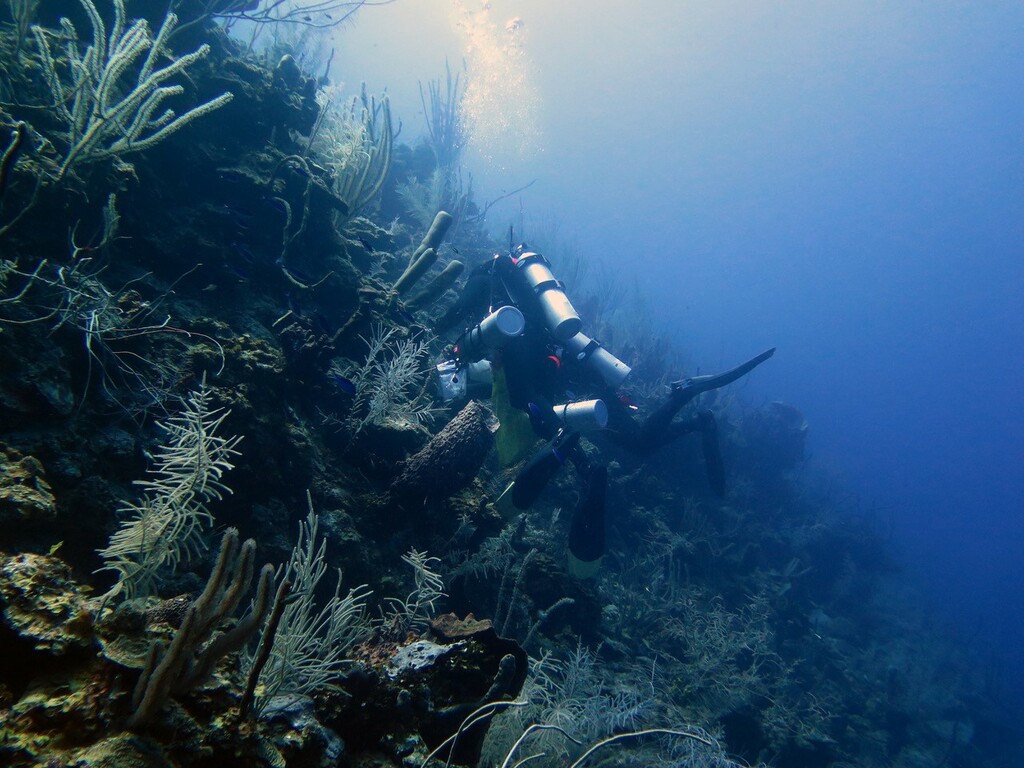 Ryan Eckert and Dani Dodge sampling Montastraea cavernosa at 35 m
(C) Voss Lab FAU-HBOI
[CC BY-NC 4.0]
Ryan Eckert and Dani Dodge sampling Montastraea cavernosa at 35 m
(C) Voss Lab FAU-HBOI
[CC BY-NC 4.0]
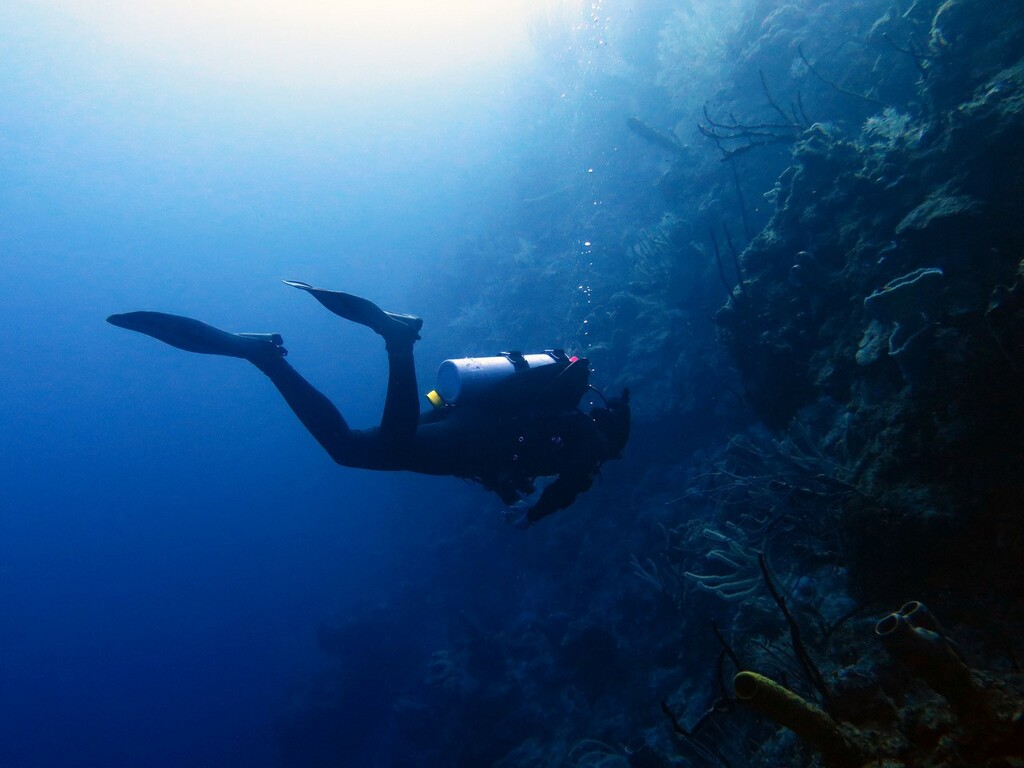 Ryan Eckert at 35 m on Glover’s Reef Atoll
(C) Voss Lab FAU-HBOI
[CC BY-NC 4.0]
Ryan Eckert at 35 m on Glover’s Reef Atoll
(C) Voss Lab FAU-HBOI
[CC BY-NC 4.0]
Any important lessons learned (through mistakes, experience or methodological advances)?
Patience and persistence — Don’t lose hope and try to shift focus/goals rather than give up! For me, this was one of my first experiences getting back into the lab, having been primarily a field biologist for 7 years, so it was a trying transition at times. In the end everything worked out great and our hard work really paid off.
Can we expect any follow-up on this work?
I hope so! We’d really like to get back out to Carrie Bow Cay and look at population genetic structure in other macro-benthic organisms and I’m really interested in doing some work on biophysical modelling. Hopefully one day soon we can get back out there and accomplish these goals.
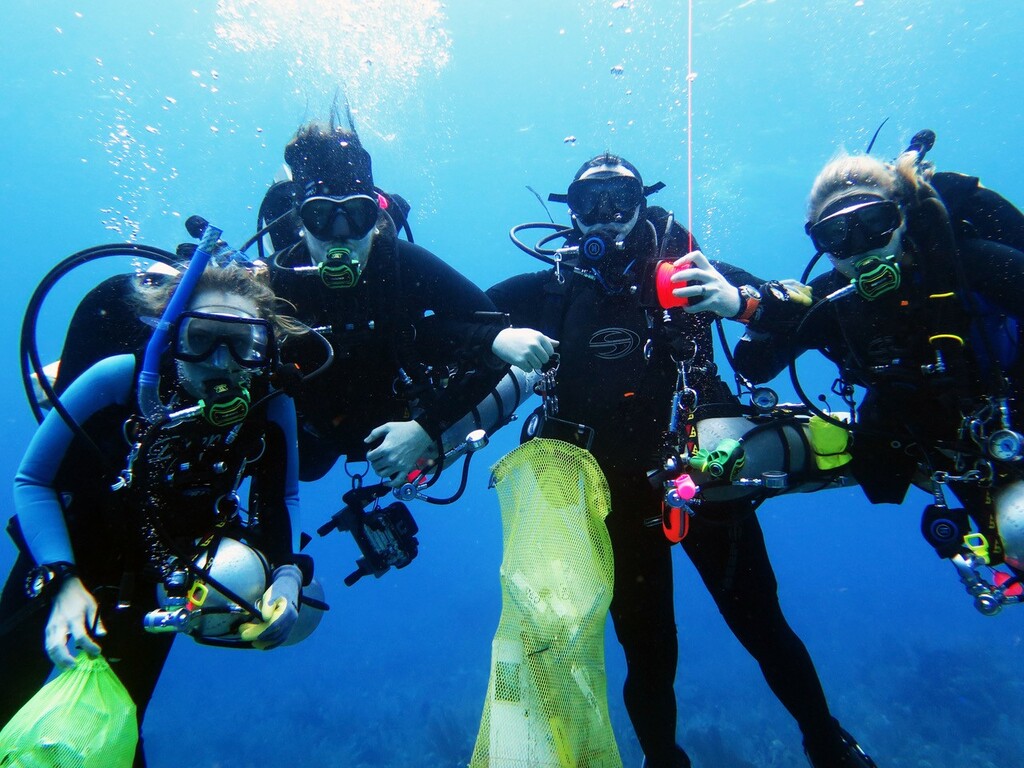 Voss Lab graduate students Alycia Shatters, Ryan Eckert, Michael Studivan, and Dani Dodge on a safety stop after sampling
(C) Voss Lab FAU-HBOI
[CC BY-NC 4.0]
Voss Lab graduate students Alycia Shatters, Ryan Eckert, Michael Studivan, and Dani Dodge on a safety stop after sampling
(C) Voss Lab FAU-HBOI
[CC BY-NC 4.0]
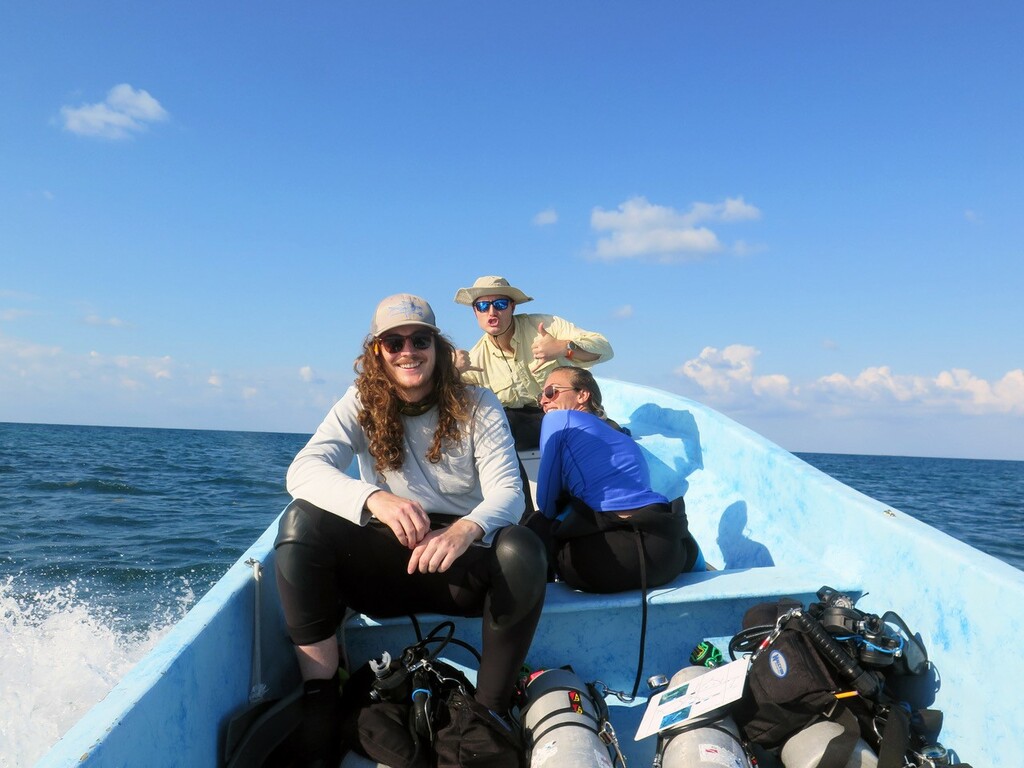 Ryan Eckert, Michael Studivan and Alycia Shatters on the ride out to Raph’s Wall
(C) Voss Lab FAU-HBOI
[CC BY-NC 4.0]
Ryan Eckert, Michael Studivan and Alycia Shatters on the ride out to Raph’s Wall
(C) Voss Lab FAU-HBOI
[CC BY-NC 4.0]
Featured article:
|
|
Depth Influences Symbiodiniaceae Associations Among Montastraea cavernosa Corals on the Belize Barrier Reef | article Eckert RJ, Reaume AM, Sturm AB, Studivan MS, Voss JD (2020) Front Microbiol |
|
